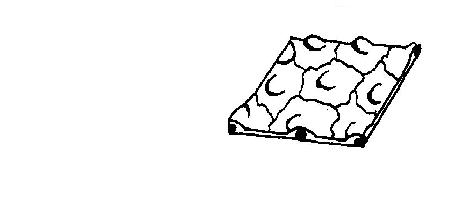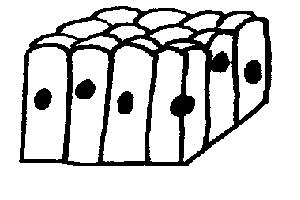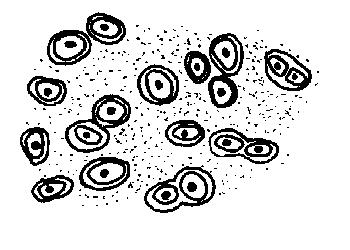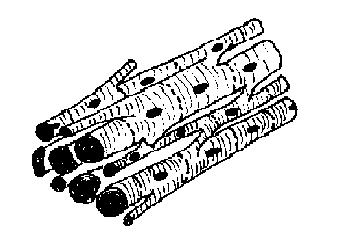4.15: Hoja de Trabajo de Tejidos
- Page ID
- 122344
\( \newcommand{\vecs}[1]{\overset { \scriptstyle \rightharpoonup} {\mathbf{#1}} } \)
\( \newcommand{\vecd}[1]{\overset{-\!-\!\rightharpoonup}{\vphantom{a}\smash {#1}}} \)
\( \newcommand{\id}{\mathrm{id}}\) \( \newcommand{\Span}{\mathrm{span}}\)
( \newcommand{\kernel}{\mathrm{null}\,}\) \( \newcommand{\range}{\mathrm{range}\,}\)
\( \newcommand{\RealPart}{\mathrm{Re}}\) \( \newcommand{\ImaginaryPart}{\mathrm{Im}}\)
\( \newcommand{\Argument}{\mathrm{Arg}}\) \( \newcommand{\norm}[1]{\| #1 \|}\)
\( \newcommand{\inner}[2]{\langle #1, #2 \rangle}\)
\( \newcommand{\Span}{\mathrm{span}}\)
\( \newcommand{\id}{\mathrm{id}}\)
\( \newcommand{\Span}{\mathrm{span}}\)
\( \newcommand{\kernel}{\mathrm{null}\,}\)
\( \newcommand{\range}{\mathrm{range}\,}\)
\( \newcommand{\RealPart}{\mathrm{Re}}\)
\( \newcommand{\ImaginaryPart}{\mathrm{Im}}\)
\( \newcommand{\Argument}{\mathrm{Arg}}\)
\( \newcommand{\norm}[1]{\| #1 \|}\)
\( \newcommand{\inner}[2]{\langle #1, #2 \rangle}\)
\( \newcommand{\Span}{\mathrm{span}}\) \( \newcommand{\AA}{\unicode[.8,0]{x212B}}\)
\( \newcommand{\vectorA}[1]{\vec{#1}} % arrow\)
\( \newcommand{\vectorAt}[1]{\vec{\text{#1}}} % arrow\)
\( \newcommand{\vectorB}[1]{\overset { \scriptstyle \rightharpoonup} {\mathbf{#1}} } \)
\( \newcommand{\vectorC}[1]{\textbf{#1}} \)
\( \newcommand{\vectorD}[1]{\overrightarrow{#1}} \)
\( \newcommand{\vectorDt}[1]{\overrightarrow{\text{#1}}} \)
\( \newcommand{\vectE}[1]{\overset{-\!-\!\rightharpoonup}{\vphantom{a}\smash{\mathbf {#1}}}} \)
\( \newcommand{\vecs}[1]{\overset { \scriptstyle \rightharpoonup} {\mathbf{#1}} } \)
\( \newcommand{\vecd}[1]{\overset{-\!-\!\rightharpoonup}{\vphantom{a}\smash {#1}}} \)
\(\newcommand{\avec}{\mathbf a}\) \(\newcommand{\bvec}{\mathbf b}\) \(\newcommand{\cvec}{\mathbf c}\) \(\newcommand{\dvec}{\mathbf d}\) \(\newcommand{\dtil}{\widetilde{\mathbf d}}\) \(\newcommand{\evec}{\mathbf e}\) \(\newcommand{\fvec}{\mathbf f}\) \(\newcommand{\nvec}{\mathbf n}\) \(\newcommand{\pvec}{\mathbf p}\) \(\newcommand{\qvec}{\mathbf q}\) \(\newcommand{\svec}{\mathbf s}\) \(\newcommand{\tvec}{\mathbf t}\) \(\newcommand{\uvec}{\mathbf u}\) \(\newcommand{\vvec}{\mathbf v}\) \(\newcommand{\wvec}{\mathbf w}\) \(\newcommand{\xvec}{\mathbf x}\) \(\newcommand{\yvec}{\mathbf y}\) \(\newcommand{\zvec}{\mathbf z}\) \(\newcommand{\rvec}{\mathbf r}\) \(\newcommand{\mvec}{\mathbf m}\) \(\newcommand{\zerovec}{\mathbf 0}\) \(\newcommand{\onevec}{\mathbf 1}\) \(\newcommand{\real}{\mathbb R}\) \(\newcommand{\twovec}[2]{\left[\begin{array}{r}#1 \\ #2 \end{array}\right]}\) \(\newcommand{\ctwovec}[2]{\left[\begin{array}{c}#1 \\ #2 \end{array}\right]}\) \(\newcommand{\threevec}[3]{\left[\begin{array}{r}#1 \\ #2 \\ #3 \end{array}\right]}\) \(\newcommand{\cthreevec}[3]{\left[\begin{array}{c}#1 \\ #2 \\ #3 \end{array}\right]}\) \(\newcommand{\fourvec}[4]{\left[\begin{array}{r}#1 \\ #2 \\ #3 \\ #4 \end{array}\right]}\) \(\newcommand{\cfourvec}[4]{\left[\begin{array}{c}#1 \\ #2 \\ #3 \\ #4 \end{array}\right]}\) \(\newcommand{\fivevec}[5]{\left[\begin{array}{r}#1 \\ #2 \\ #3 \\ #4 \\ #5 \\ \end{array}\right]}\) \(\newcommand{\cfivevec}[5]{\left[\begin{array}{c}#1 \\ #2 \\ #3 \\ #4 \\ #5 \\ \end{array}\right]}\) \(\newcommand{\mattwo}[4]{\left[\begin{array}{rr}#1 \amp #2 \\ #3 \amp #4 \\ \end{array}\right]}\) \(\newcommand{\laspan}[1]{\text{Span}\{#1\}}\) \(\newcommand{\bcal}{\cal B}\) \(\newcommand{\ccal}{\cal C}\) \(\newcommand{\scal}{\cal S}\) \(\newcommand{\wcal}{\cal W}\) \(\newcommand{\ecal}{\cal E}\) \(\newcommand{\coords}[2]{\left\{#1\right\}_{#2}}\) \(\newcommand{\gray}[1]{\color{gray}{#1}}\) \(\newcommand{\lgray}[1]{\color{lightgray}{#1}}\) \(\newcommand{\rank}{\operatorname{rank}}\) \(\newcommand{\row}{\text{Row}}\) \(\newcommand{\col}{\text{Col}}\) \(\renewcommand{\row}{\text{Row}}\) \(\newcommand{\nul}{\text{Nul}}\) \(\newcommand{\var}{\text{Var}}\) \(\newcommand{\corr}{\text{corr}}\) \(\newcommand{\len}[1]{\left|#1\right|}\) \(\newcommand{\bbar}{\overline{\bvec}}\) \(\newcommand{\bhat}{\widehat{\bvec}}\) \(\newcommand{\bperp}{\bvec^\perp}\) \(\newcommand{\xhat}{\widehat{\xvec}}\) \(\newcommand{\vhat}{\widehat{\vvec}}\) \(\newcommand{\uhat}{\widehat{\uvec}}\) \(\newcommand{\what}{\widehat{\wvec}}\) \(\newcommand{\Sighat}{\widehat{\Sigma}}\) \(\newcommand{\lt}{<}\) \(\newcommand{\gt}{>}\) \(\newcommand{\amp}{&}\) \(\definecolor{fillinmathshade}{gray}{0.9}\)Name: ______________________________
Section: _____________________________
Student ID#:__________________________
Trabajar en grupos sobre estos problemas. Deberías tratar de responder a las preguntas sin hacer referencia a tu libro de texto. Si te quedas atascado, intenta pedir ayuda a otro grupo.
Círculo de la respuesta correcta
- 1. Un tejido es: una colección de núcleos/una colección de orgánulos/una colección de células/una colección de órganos.
- 2. Los cuatro tipos principales de tejido son: epitelial/grasa/conectivo/hueso/músculo/nervioso/sangre.
- 3. Tejido epidérmico: protege y soporta el cuerpo/cubre las superficies del cuerpo/es responsable del movimiento/líneas órganos huecos/transmite impulsos nerviosos/forma glándulas.
- 4. El interior de los vasos sanguíneos está revestido con: epitelio cuboidal/epitelio escamoso/epitelio transicional/epitelio columnar.
- 5. El tejido que se ilustra a continuación es: epitelio cuboidal/tejido adiposo/epitelio escamoso/tejido conectivo flojo/sangre.

- 6. Los túbulos renales están revestidos con: ¿epitelio cuboidal/epitelio escamoso/epitelio transicional/epitelio columnar?
- 7. ¿Dónde NO se encuentra el epitelio columnar ciliado: en el túbulo renal/revestimiento de las trompas de Falopio/revestimiento de la tráquea/revestimiento del intestino delgado?
- 8. Epitelios estratificados: fueron establecidos hace muchos siglos/son más importantes que otros tejidos/constan de varias capas de células/siempre ocurren en líneas rectas.
- 9. El epitelio transicional permite que las: arterias se expandan/piel para estirarse/útero para contraerse/vejiga para estirar.
- 10. El tejido que se ilustra a continuación es: epitelio escamoso/epitelio columnar/epitelio estratificado escamoso/epitelio transicional/linfa

- 11. El epitelio escamoso estratificado no queratinizado NO OCEDE: recubre la vagina/cubriendo el cuerpo/recubriendo la boca/recubriendo el útero.
- 12. Las células superficiales del epitelio escamoso estratificado queratinzado son continuamente: muriendo/cambiando de forma/siendo recicladas/siendo desprendidas de la superficie.
- 13. ¿Cuáles de las siguientes NO se encuentran en el tejido conectivo? :Celdas/fibras/minerales/matriz fluida/cilios.
- 14. ¿Cuáles de los siguientes NO son tejidos conectivos: sangre/uñas/tendón/hueso/saliva/tejido adiposo/cartílago?
- 15. ¿Cuál de los siguientes tejidos musculares tiene fibras ramificadas, discos intercalados entre células adyacentes y se contrae automáticamente: músculo voluntario estriado/músculo liso involuntario/músculo cardíaco?
- 16. ¿Cuál de los siguientes tejidos musculares tiene fibras largas con bandas cruzadas y núcleos en la superficie? ¿Músculo voluntario estriado/músculo liso involuntario/músculo cardíaco?
- 17. ¿Qué tejido muscular mueve los huesos? músculo voluntario estriado/músculo liso involuntario/músculo cardíaco.
- 18. El tejido que se ilustra a continuación es: músculo estriado/sangre/epitelio escamoso/cartílago/epitelio transicional

- 19. ¿Qué tejido muscular se encuentra en las paredes de los vasos sanguíneos, en la pared intestinal y en las glándulas? músculo voluntario estriado/músculo liso involuntario/músculo cardíaco.
- 20. El tejido que se ilustra a continuación es: músculo estriado/tendón/músculo liso/epitelio transicional/músculo cardíaco

- 21. Haga coincidir el tipo de tejido con la función.
| Tipo de tejido | Función |
|---|---|
| a. Tejido Conectivo | A. Comunicar |
| b. tejido muscular | B. Apoyo y comunicación |
| c. Tejido Epitelial | C. Contratación |
| d. Tejido Nervioso | D. Recubrimiento y forro |


